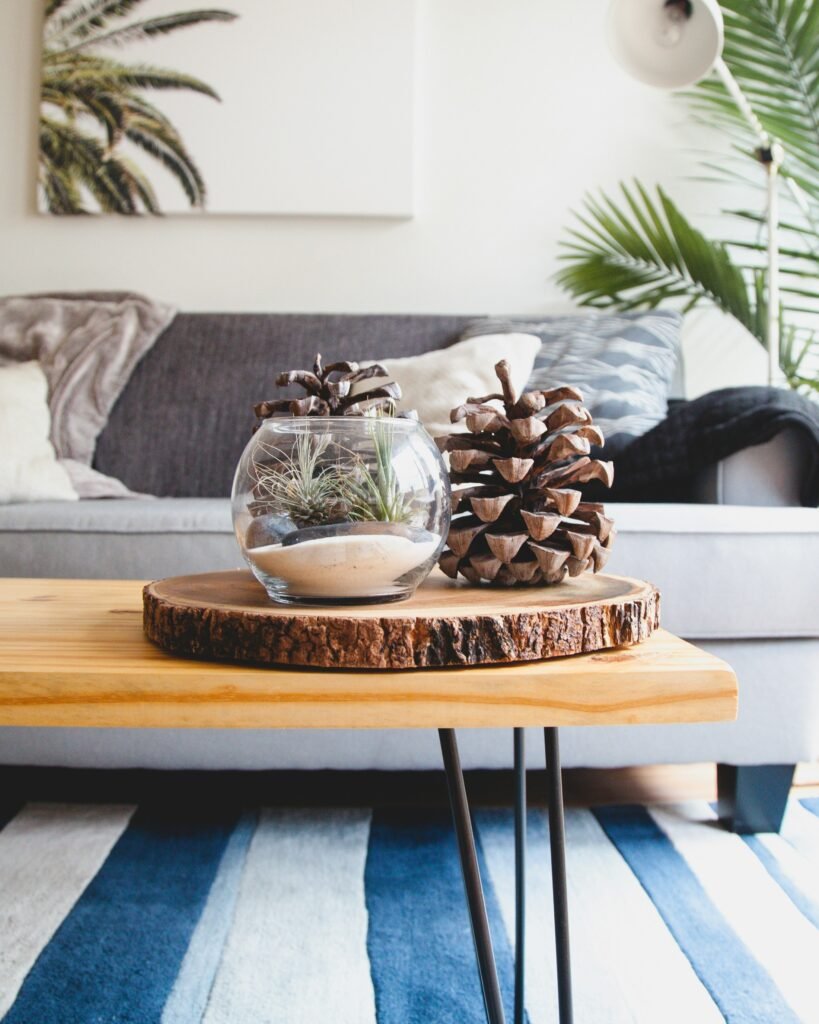In the quest for the perfect kitchen ambiance, there’s a simple yet highly effective technique that can transform your culinary haven into an oasis of warmth and sophistication: layered lights. By strategically placing different sources of light at different levels, you can create a harmonious blend of illumination that not only enhances functionality but also adds a touch of elegance to your kitchen. From under-cabinet task lighting to statement pendant fixtures, this article explores the art of layering lights to bring out the best in your kitchen space. So, come along, and let’s illuminate your kitchen in style.
Importance of Layered Lights in Kitchen Spaces
Having proper lighting in your kitchen is essential for both functionality and aesthetics. Layered lights not only enhance visibility and safety in the space but also create a warm and inviting atmosphere. By highlighting different areas and features, layered lights can completely transform the look and feel of your kitchen.
Enhancing visibility and safety
One of the key benefits of layered lights in kitchen spaces is improved visibility and safety. Proper lighting helps you see clearly and navigate your kitchen with ease, especially during tasks that require precise movements, such as chopping vegetables or cooking over the stove. With layered lights, you can ensure adequate illumination in every corner of your kitchen, reducing the risk of accidents or mishaps.
Creating a warm and inviting atmosphere
In addition to functionality, layered lights also play a crucial role in creating a warm and inviting atmosphere in your kitchen. By using different types of lights and strategically placing them, you can achieve a balance between ambient, task, and accent lighting, which adds depth and character to your kitchen space. The right combination of lighting can transform your kitchen into a cozy gathering place for family and friends.
Highlighting different areas and features
Layered lights allow you to highlight different areas and features in your kitchen, adding visual interest and depth to the space. Whether it’s showcasing your beautiful countertops, highlighting architectural details, or drawing attention to artwork and decor, the right lighting can make all the difference. By properly layering lights, you can create focal points and direct attention to specific areas, enhancing the overall aesthetics of your kitchen.
Types of Lights for Layering
To achieve a well-layered lighting design in your kitchen, it’s important to understand the different types of lights that are commonly used. Each type serves a specific purpose and contributes to the overall ambiance of the space.
Ambient lighting
Ambient lighting refers to the general illumination that evenly lights up the entire kitchen space. It sets the overall tone and brightness level for the room. Common fixtures used for ambient lighting include flush mount ceiling fixtures, recessed lights, and chandeliers. The goal of ambient lighting is to provide a comfortable level of illumination for everyday tasks and activities in the kitchen.
Task lighting
Task lighting focuses on providing targeted, bright light for specific work areas in the kitchen. It is essential for activities that require extra visibility, such as cooking, food preparation, and reading recipes. Under-cabinet lights, pendant lights, and track lighting are popular choices for task lighting. Properly placed task lights eliminate shadows and provide ample illumination where it is needed the most.
Accent lighting
Accent lighting is all about adding drama and style to your kitchen space by highlighting specific areas, objects, or architectural features. By using accent lights, you can create a focal point or draw attention to certain elements of your kitchen design. Spotlights, wall sconces, and LED strips are commonly used for accent lighting. It brings depth, texture, and visual interest to your kitchen, elevating its overall aesthetics.

This image is property of images.unsplash.com.
Choosing and Placing Ambient Lighting
Determining the overall brightness of your ambient lighting is the first step in creating a well-lit kitchen space. Consider factors such as the size of the kitchen, the amount of natural light, and your personal preferences. Generally, a brightness level of 50-100 lumens per square foot is recommended for ambient lighting in kitchens.
Once you have determined the overall brightness, the next step is to select the right fixtures. Flush mount ceiling fixtures are a popular choice for ambient lighting as they provide even illumination throughout the kitchen. However, if you prefer a more decorative option, chandeliers or pendant lights can be great alternatives. Consider the style, size, and height of the fixture to ensure it complements the overall design of your kitchen.
The placement of your ambient lighting fixtures is crucial for achieving optimal illumination. Distribute the fixtures evenly across the kitchen space, focusing on areas where general lighting is needed. This includes the center of the room, above the kitchen island, and near sink and stove areas. By strategically placing your ambient lighting fixtures, you can ensure that every corner of your kitchen is well-lit.
Optimizing Task Lighting
Identifying key work areas in your kitchen is essential for optimizing task lighting. These areas typically include the countertops, stove, sink, and any other spaces where you frequently perform tasks that require focused light. Evaluate your daily activities in the kitchen and determine which areas require the most visibility.
Under-cabinet lights are a popular choice for task lighting as they provide direct, focused light to the countertops. These lights can be installed underneath the upper cabinets, illuminating the work surface and eliminating shadows. LED strip lights or puck lights are often used for under-cabinet lighting due to their energy efficiency and sleek design.
If you have a kitchen island, installing pendant lights above it can enhance both the functionality and aesthetics of the space. Pendant lights provide concentrated light for tasks performed on the island, such as food preparation or casual dining. You can choose from a wide range of styles and designs to match your kitchen’s overall theme and decor.

This image is property of images.unsplash.com.
Adding Accent Lighting for Style
Accent lighting is the perfect way to add style and flair to your kitchen. It allows you to showcase architectural details, highlight artwork and decor, and create a visually appealing atmosphere. By incorporating accent lighting into your kitchen design, you can create focal points and add depth to the space.
Architectural details, such as exposed brick walls or decorative ceilings, can be beautifully accentuated with well-placed spotlights. Installing spotlights above these features directs light towards them, creating an eye-catching display. Similarly, accent lights can be used to draw attention to shelves or display cabinets where you showcase your favorite kitchen accessories or collectibles.
Artwork and decor items in your kitchen deserve to be highlighted as well. Wall sconces or track lights can be used to illuminate specific pieces, adding a touch of elegance to the space. By using adjustable fixtures, you can easily direct the light towards different items, allowing you to change the display whenever you want.
Another trendy way to incorporate accent lighting in your kitchen is by using LED strips. These versatile lights can be installed under countertops, above cabinets, or along the toe kick of your kitchen island. The soft glow of these strips adds a modern touch and creates a visually stunning effect, especially in the evenings.
Layering Lights with Dimmers and Controls
Having the ability to adjust light levels in your kitchen based on different activities is key to creating a versatile and functional space. Dimmers and lighting controls can help you achieve this flexibility and enhance the overall ambiance.
Adjusting light levels for different activities is made easy with dimmers. They allow you to change the brightness of your lights, from soft and cozy for a romantic dinner to bright and focused for cooking or cleaning. Dimmers are commonly installed for ambient and task lighting, giving you the opportunity to customize the lighting according to the mood or task at hand.
Smart lighting controls are becoming increasingly popular in modern kitchens. These systems allow you to control your kitchen lights through a smartphone app or voice commands, giving you convenient access to adjust the lighting from anywhere in the room. With smart lighting, you can create presets, set schedules, and even integrate your kitchen lights with other smart home devices for a seamless experience.

This image is property of images.unsplash.com.
Creating a Balanced Lighting Design
Achieving a balanced lighting design in your kitchen involves considering various factors and making intentional choices. By keeping these considerations in mind, you can create an environment that is both functional and beautiful.
When designing your kitchen lighting, take into account the natural light sources available. Position your lighting fixtures in a way that complements the natural light, ensuring that the overall brightness is balanced throughout the day. This balance between natural and artificial light creates a harmonious and inviting atmosphere.
Mixing different light sources is another way to create a balanced lighting design. By combining ambient, task, and accent lighting, you can achieve layers of light that work together harmoniously. This combination not only provides adequate illumination for different activities but also adds depth and visual interest to your kitchen.
Avoiding glare and shadows is crucial for a well-lit kitchen. Position your lights in a way that minimizes glare and shadows, especially in task areas. Consider the placement of your fixtures and the angle of the light to ensure that it doesn’t cast unwanted shadows or create uncomfortable glare on work surfaces.
Enhancing Kitchen Safety with Lighting
Proper lighting plays a vital role in enhancing kitchen safety. By optimizing visibility in work areas, installing motion-sensor lights, and including proper task lighting, you can create a safer environment for yourself and your family.
Visibility in work areas is key to preventing accidents and injuries. Adequate task lighting ensures that you have clear visibility of your workspace, eliminating any potential hazards. Bright, focused lights above countertops, stoves, and sinks provide the necessary illumination for safe food preparation and cooking.
Motion-sensor lights are a great addition to a well-lit kitchen, especially in areas where hands are often occupied. By installing motion-sensor lights near entryways, cabinets, or pantry spaces, you can ensure that the lights automatically turn on when you enter the area. This hands-free lighting solution is convenient and adds an extra layer of safety to your kitchen.
Proper task lighting is essential for activities that require focused visibility, such as chopping vegetables or reading recipes. By using under-cabinet lights or pendant lights, you can provide direct, bright light to these specific work areas, reducing the risk of accidents. Well-illuminated task areas enhance both safety and efficiency in the kitchen.
Energy Efficiency and Sustainability
In today’s world, energy efficiency and sustainability are important considerations for any lighting design. By choosing energy-efficient bulbs, using timers and sensors, and considering natural lighting options, you can create a kitchen lighting design that is both eco-friendly and cost-effective.
Choosing energy-efficient bulbs, such as LED or CFL, can significantly reduce your energy consumption. These bulbs use less electricity compared to traditional incandescent bulbs and have a longer lifespan. LED bulbs, in particular, are known for their durability, energy efficiency, and the ability to produce high-quality light.
Using timers and sensors in your kitchen lighting system can help save energy by automatically turning off lights when they are not needed. Timers can be set to turn off lights after a certain period of time, while sensors can detect movement and adjust lighting accordingly. By incorporating these features, you can minimize energy wastage and contribute to a more sustainable kitchen.
Considering natural lighting options is another way to improve energy efficiency in your kitchen. Maximize the use of natural light by positioning windows strategically and using light-colored window treatments that allow ample natural light to pass through. This reduces the need for artificial lighting during daylight hours, saving energy and creating a bright and airy atmosphere.
Professional Tips and Inspiration
If you’re unsure about the best lighting design for your kitchen, consulting a lighting designer can be incredibly helpful. Lighting designers have the expertise and knowledge to create a customized lighting plan that suits your specific needs and preferences. They can provide valuable insights and recommendations on fixtures, placement, and overall design.
Exploring different kitchen lighting styles can also inspire you to create a unique and personalized lighting design. There are endless possibilities when it comes to kitchen lighting, from sleek and modern to rustic and traditional. Look for inspiration in design magazines, online platforms, or even by visiting kitchen showcases. Pay attention to the lighting choices in those spaces and see how they can be adapted to suit your own kitchen.
Seeking inspiration from kitchen showcases is another great way to gather ideas for your own lighting design. Showcases and home tours allow you to see real-life examples of well-designed kitchen spaces and the lighting choices that have been made. Take note of how the different layers of lighting are utilized and how they contribute to the overall ambiance and functionality of the kitchen.
In conclusion, layered lights are of utmost importance in kitchen spaces. They enhance visibility and safety, create a warm and inviting atmosphere, and highlight different areas and features. By incorporating ambient lighting, task lighting, and accent lighting, you can achieve a well-balanced and functional lighting design. Remember to consider factors such as natural light sources, energy efficiency, and consult professionals for guidance and inspiration. With the right lighting, you can transform your kitchen into a beautiful and functional space that you’ll enjoy for years to come.
